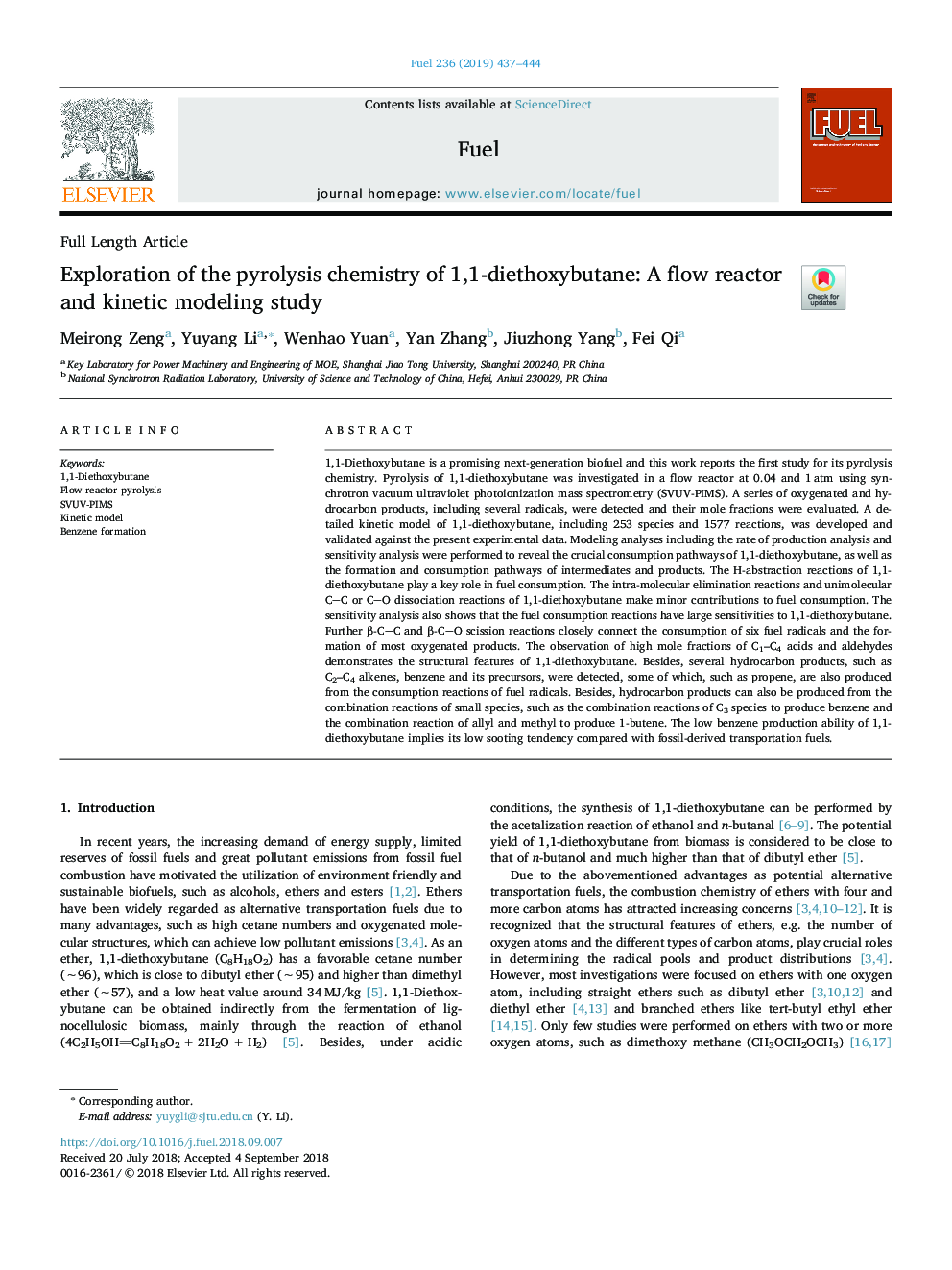| کد مقاله | کد نشریه | سال انتشار | مقاله انگلیسی | نسخه تمام متن |
|---|---|---|---|---|
| 10145438 | 1646362 | 2019 | 8 صفحه PDF | دانلود رایگان |
عنوان انگلیسی مقاله ISI
Exploration of the pyrolysis chemistry of 1,1-diethoxybutane: A flow reactor and kinetic modeling study
دانلود مقاله + سفارش ترجمه
دانلود مقاله ISI انگلیسی
رایگان برای ایرانیان
موضوعات مرتبط
مهندسی و علوم پایه
مهندسی شیمی
مهندسی شیمی (عمومی)
پیش نمایش صفحه اول مقاله

چکیده انگلیسی
1,1-Diethoxybutane is a promising next-generation biofuel and this work reports the first study for its pyrolysis chemistry. Pyrolysis of 1,1-diethoxybutane was investigated in a flow reactor at 0.04 and 1â¯atm using synchrotron vacuum ultraviolet photoionization mass spectrometry (SVUV-PIMS). A series of oxygenated and hydrocarbon products, including several radicals, were detected and their mole fractions were evaluated. A detailed kinetic model of 1,1-diethoxybutane, including 253 species and 1577 reactions, was developed and validated against the present experimental data. Modeling analyses including the rate of production analysis and sensitivity analysis were performed to reveal the crucial consumption pathways of 1,1-diethoxybutane, as well as the formation and consumption pathways of intermediates and products. The H-abstraction reactions of 1,1-diethoxybutane play a key role in fuel consumption. The intra-molecular elimination reactions and unimolecular CC or CO dissociation reactions of 1,1-diethoxybutane make minor contributions to fuel consumption. The sensitivity analysis also shows that the fuel consumption reactions have large sensitivities to 1,1-diethoxybutane. Further β-CC and β-CO scission reactions closely connect the consumption of six fuel radicals and the formation of most oxygenated products. The observation of high mole fractions of C1-C4 acids and aldehydes demonstrates the structural features of 1,1-diethoxybutane. Besides, several hydrocarbon products, such as C2-C4 alkenes, benzene and its precursors, were detected, some of which, such as propene, are also produced from the consumption reactions of fuel radicals. Besides, hydrocarbon products can also be produced from the combination reactions of small species, such as the combination reactions of C3 species to produce benzene and the combination reaction of allyl and methyl to produce 1-butene. The low benzene production ability of 1,1-diethoxybutane implies its low sooting tendency compared with fossil-derived transportation fuels.
ناشر
Database: Elsevier - ScienceDirect (ساینس دایرکت)
Journal: Fuel - Volume 236, 15 January 2019, Pages 437-444
Journal: Fuel - Volume 236, 15 January 2019, Pages 437-444
نویسندگان
Meirong Zeng, Yuyang Li, Wenhao Yuan, Yan Zhang, Jiuzhong Yang, Fei Qi,